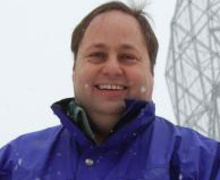The Dwingeloo radio telescope is a historic instrument in the Netherlands. At its opening in 1956, the 25m dish was the largest fully steerable radio telescope in the world. These days it is run by a group of volunteers, who have restored and rejuvenated the instrument. It is used for radio astronomy and amateur radio, but also for outreach and art projects, to name a few of our activities.
We perform observations of pulsars, the hydrogen line of our own Milky Way and other galaxies, have a SETI project, and have recently participated in our first VLBI observation. We are increasingly using Software Defined Radio and in particular GNU Radio to perform our measurements. This allows for rapid development of new signal processing chains, and a lot of flexibility in how we process the incoming data.
In this presentation I will present some of the signal processing that is useful for radio astronomy, the flowcharts we have developed, and the astronomical results that we obtain with them.

